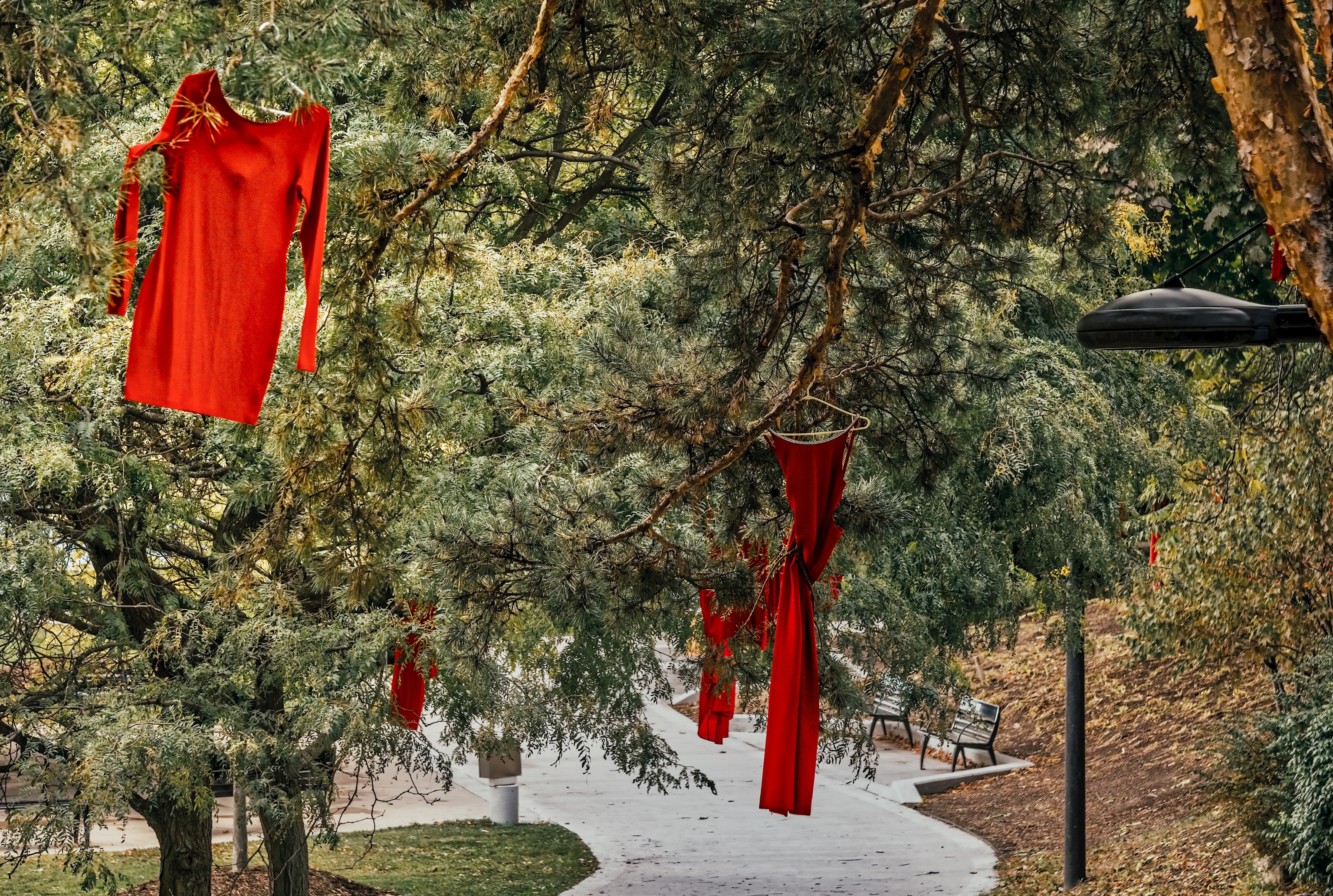371 Bloor Street West
Toronto, ON M5S 2R7 get directions
Toronto, ON M5S 2R7 get directions


This Sunday, red dresses will hang across the country in recognition of the missing and murdered Indigenous women and children. This stark reminder of the ongoing tragedy points to the need for education and action if solutions are to be found.
The symbol of the red dress began fourteen years ago when Métis artist Jamie Black first hung hundreds of red dresses in public spaces with her REDress Project, using art as a powerful statement to draw attention to an ongoing tragedy in our country. The empty red dresses are a visceral symbol of what is missing and what has been lost – the thousands of murdered and missing Canadian Indigenous women, girls and two-spirit people who never came home. The dresses highlight both the systemic violence and systemic inaction that mean so many are never found. The artist chose the colour red after speaking with an Indigenous friend who told her red is the colour best seen by spirits; the empty red dresses can call the spirits of missing and murdered Indigenous girls and two-spirit peoples home to their loved ones.
In 2011, Jamie Black displayed a REDress installation at the University of Winnipeg and it continued to travel to various universities, museums and public institutions, reaching the Smithsonian National Museum of the American Indian in 2019.
Red Dress Day was established as a national day, commemorated on May 5. This day is now Canada’s National Day of Awareness for Missing and Murdered Indigenous Women, Girls and Two-Spirit People.
On May 3, the UTS Indigenous Solidarity Committee and Gender Equity Committee will hang red dresses at the school to mark this day of awareness. They will also host an open discussion at lunch for students and staff who are interested. Students may choose to wear red in recognition of this day.
I am proud of our students for their commitment to educating our community about the reality of the violence faced by Indigenous women, girls and two-spirited people, who we know are killed at a rate six times higher than their non-indigenous counterparts. As they remember the missing, they give voice to those who cannot speak and are unable to advocate for change.
